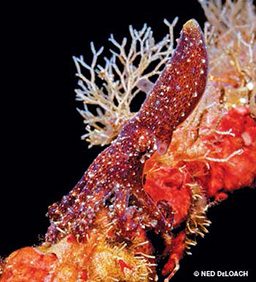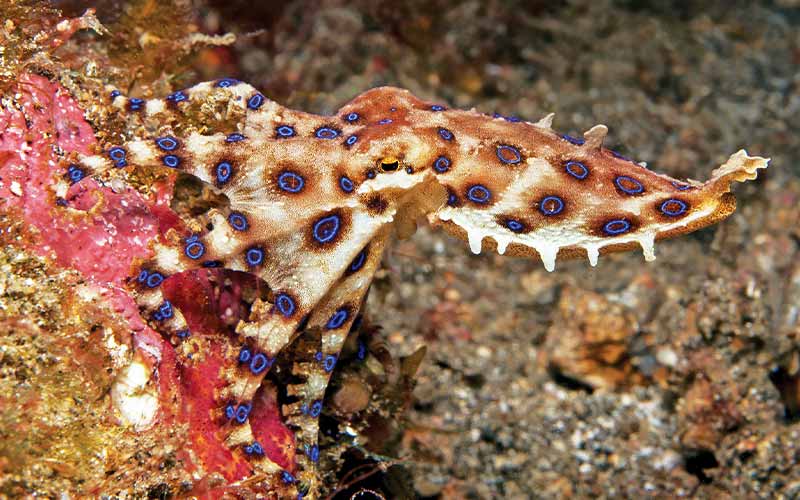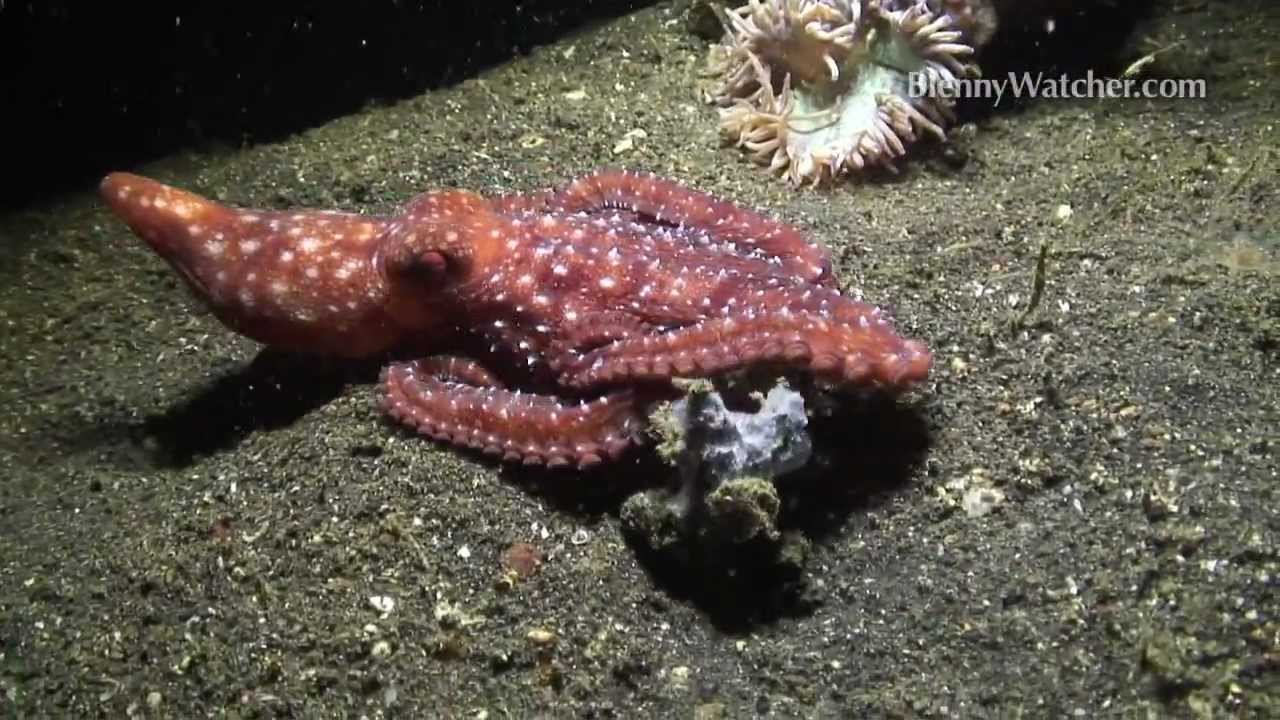Even after 45 years of diving I still feel like I’m about to make a great discovery each time I go underwater. Some would say my optimism is overblown. For such skeptics I offer the tale of a recent dive in Indonesia’s Lembeh Strait.

The story begins with my guide, Johan Lumonang, and me dropping down the coral slope of Tanjung Kubor, a long-neglected dive site on the western shore of Lembeh Island.
At 70 feet, the incline planes flat into a sand shelf pocked with encrusted rocks and bits of trash. The barren seascape is of no concern; we’re not here for beauty. We’re on the prowl for creatures that have adapted to a world with few hiding holes by delving into the alchemy of camouflage. A few species have taken their masquerades to extremes. These are the animals we’re after. The trick comes in finding them.
There is nothing elaborate about critter hunting. Leaning forward from fin tips until our masked faces float just above the sand, we shuffle along inspecting everything we pass. The eyes have a way of messing with the mind when searching for creatures designed by nature to not be found. Twigs turn into shrimp and algae into octopuses. In fact, there is actually a walnut-sized species of octopus with a lion’s mane of skin filaments so wispy it looks like a tuft of algae. That creature, the legendary hairy octopus, a species that has not been formally described and named, has topped my list of must-see animals ever since I first heard it existed 10 years ago. Tanjung Kubor provides the perfect environment for finding such a critter, but I’ve been hunting similar terrain for years without ever laying eyes on one of the wily illusionists.
A good guide is indispensible for finding the most secretive animals, and Johan is one of the best, combining skill and experience with a bit of magic. Twenty minutes into the dive he raps on his tank with an unusually rapid rhythm. I’m by his side in a flash. At the tip of his pointer sits an odd little octopus with its elongated mantle rising high from a platform of curled legs. A close look reveals the faint outline of blue rings running the length of its legs and spilling onto its mantle. Not quite believing my eyes, I blink and lean closer. Although tiny, the biological markers of the blue-ringed octopus (genus Hapalochlaena) are definitely there. It’s unlike any species I’ve ever seen before — either underwater or in the pages of guidebooks. To date only three blue-ringed species have been scientifically described, but there are at least six candidates for genus status that have been photographically documented. This fine fellow should increase the count to seven. I’m still watching the octopus when Johan comes flying back, motioning excitedly. Realizing I’m reluctant to leave, he points to his hair. We’re off.

Thirty feet away he comes to a halt where his metal rod, left as a marker, rises from the sand next to a scattering of rocks. Leaning forward with his arms spread wide like an umpire signaling a runner safe, he sweeps his eyes across the bottom. Seeing nothing, he reaches out and turns one rock and then another, but no luck. Soon he’s inching forward like a cat after a lizard. As seconds tick by I watch spellbound from a discreet distance, hardly daring to breathe. After a minute that seems like an hour, the target of my decadelong search appears at the end of Johan’s finger; it’s a fuzzy bump pretending to be a clump of algae tucked away on the side of a rock. No wonder it has taken so long to track down. I pump a fist to Johan and turn back to his second great discovery of the dive.
This is no standard-issue octopus. From mantle to legs it flows with filaments. We watch as the octopus lifts off and with curled legs leading swims to a neighboring rock. I glance down at my computer — the news isn’t good. I get Johan’s attention, and we head back toward the slope, but luck keeps coming.
Johan stops dead in his tracks in front of another blue-ringed octopus, this one a member of a species that frequents the strait, but from what we’ve heard it’s the first one sighted this season. Unlike the demure blue-ring we gloried in earlier, this bad boy is proud of its poison and quick to flash its rings. Not caring a whiff about us, the octopus half slips and half swims its boneless body across the bottom, its mind focused on a crab dinner. But unfortunately there is no time left at this depth to watch the hunt.
Basking in the glory of our three-octopus excursion during an extended safety stop, I begin thinking about the next dive, the third dive of the day. One never knows — it might be even better.
Explore More
© Alert Diver — Q4 Fall 2012

